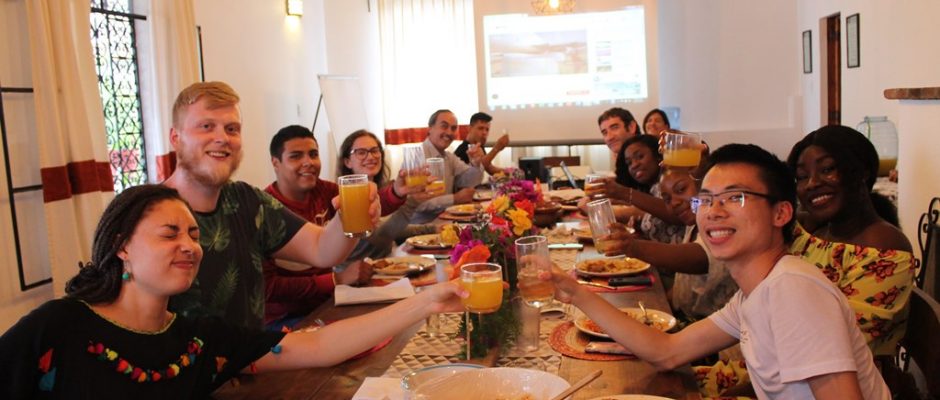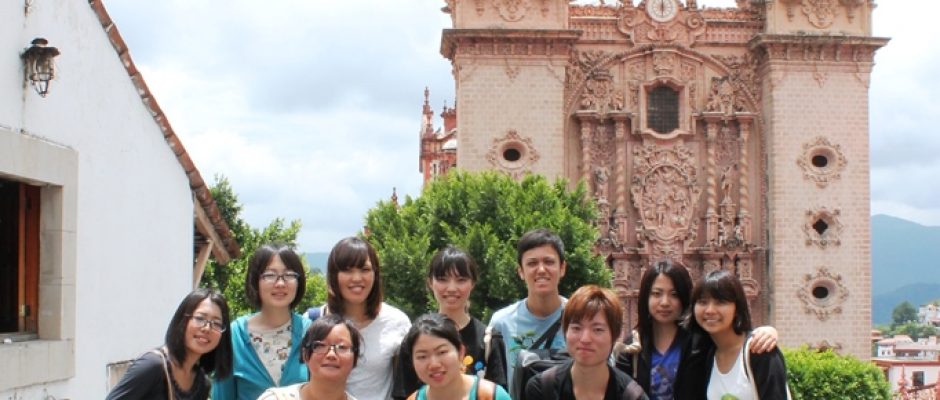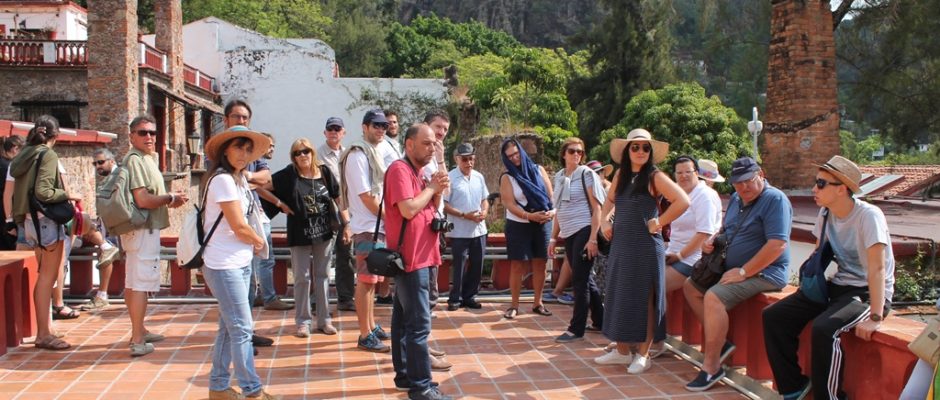Intensive & Immersive Teachers Training course
Summer 2024
Two cities, two different environments: one great learning experience
Are you a Spanish teacher as a foreign language and would you like to improve your skills? This course is for you.
The course aims to improve on the Spanish language through formal classes on aspects of language teaching, as well as select topics on Mexican culture. Included are workshops to teach Spanish through cultural topics in a real context, plus a Spanish teaching seminar with the interaction of Mexican teachers, as well as a package of excursions to historic landmarks in a format of outdoor classes that become in truly learning experiences.
All activities will provide to the teacher with formulas, resources, teaching tools and skills, cultural keys, and transformative proposals to renew and do better teaching work for the benefit of their students.
-
A Complete program of classes, workshops, and guided visits to provide teachers with new skills, resources, cultural keys, and didactic proposals to improve the daily teaching work.
Aimed at:
Duration:
Location:
Starting dates:
Study format:
Language:
Total hours:
Total cost:
(Middle, high school & higher education)
2 weeks
Spanish language teachers
July 1st / July 15th
Landmark campus, classroom and fieldwork sessions
Spanish (B1 Level in advanced)
40 (20 per week)
$1,355 USD
-
- Spanish language dynamic (Total: 12 hours)
This class is focused on the practice of Spanish and its grammar from a communicative approach, while teaching strategies that will be acquired by the participants with special emphasis on topics of interest to the participants.
6 hours per week (4 classes of 1.5 hours each)
- Mexican cultural diversity (Total: 6 hours)
This class offers a general overview of the main episodes in the history of Mexico and its social processes of transformation, as well as the permanent presence of the original indigenous people, whose expression is the cultural and artistic traditions of the nowdays multiple identities of Mexico.
Hours: 3 a week (2 classes 1.5 hours each)
- Didactics Seminar (2 sessions)
This activity is an ideal space for dialogue and the exchange of ideas based on presentations focused on linguistic issues and the teaching of language, culture, and communication implications, led by specialized Spanish language teachers for foreigners from the UNAM.
Hours: 4 (2 sessions 2 h each)
- Workshops of Spanish language teaching through culture topics
These workshops are specially designed for the teachers to acquire cultural keys, under the teaching premise of “learning by doing” in real contexts and on specific fields of knowledge, such as environment and ecology, gastronomy, and Mexican folk art, in order to reinforce the practice of Spanish and expand vocabulary.
Hours: 9 (3 sessions 3 hours each)
- Teaching practices in landmarks, museums, and daily life sites
Exploration of archaeological and historical sites and museums, as well as everyday Mexican spaces (markets, public places, the plaza and fiesta), where the participants will learn on first-hand and develop their language teaching skills in real communication contexts. Perfect examples of outdoor classes.
Hours 9 (3 experiences 3 hours each)
-
$1,355 USD per participant
What is included?
-
All the academic and training content:
40 hours of classes, sessions, workshops and excursions
Registration, CEPE UNAM ID and scholar materials
Also includes the following services:
-
Taxco city tour and welcome brunch
-
Round transfer between Mexico City Airport and Taxco
-
Ground transportation in all visits and local practices
-
All entrees and fees in museums and landmarks
-
All equipment, tools, supplies and raw materials in workshops
-
Full accommodation in CEPE Taxco academic residence (shared rooms). Casa Robin
-
Hotel in Mexico City Historic Center during the stay (shared rooms)
-
-
The CEPE-UNAM campus in Taxco is located in an architectural complex which is part of the country’s historical and cultural heritage: The Ex Hacienda El Chorrillo. It’s a unique place full of history and surrounded by lush vegetation within an enchanted Mexican town.
It was the first mining site in Latin America, ordered to be built by Hernán Cortés in the 16th century. For more than 400 years, the process of separating silver ore was done using water as a driving force. In the beginning of the 20th century, it is said that the Hacienda was raided by Emiliano Zapata’s troops.
Afterwards, the Hacienda was abandoned and it had different owners until the 1940s when it was acquired by the Sullivans, an American couple who conserved many of the original structures, and used to build small houses to be offered as an exclusive tourist service for distinguished visitors and friends. It is thought that one of the Kennedy brothers and Marilyn Monroe were some of the famous guests.
Later, in 1992, the Ex-Hacienda was loaned to UNAM to establish an alternative location for CEPE and strengthen the academic and educational project of international outreach. Recently, between 2020 and 2021 seven new classrooms were built in order to modernize the facilities dedicated to teaching, consistent with UNAM’s demand for academic quality of the highest world class standards, whether it be in person, online, or blended learning.
<
-
Taxco is located in the State of Guerrero, 180 km (2 hours) from the south of Mexico City and adjacent to the State of Morelos. Its natural surroundings are mountainous with a warm climate (14°-32°C) with rain during the summer. It is a typical Mexican colonial town that began as a mining settlement, the reason why today it is recognized for its handcrafted silver jewelry businesses.
Taxco’s baroque religious architecture is highlighted with Santa Prisca Church, as well as its picturesque white colonial houses with red tile roofs and black ironwork. Taxco’s main square is the heart of social and economic life, which is surrounded by streets, alleys, stairways, and upward and downward slopes which lead to smaller plazas; this entire urban environment is covered in cobblestone streets, adorned with white marble that stands out in contrast.
Since it is a small tourist city, everything is within walking distance, but there is also public transportation: vans and taxis, most of which are VW Beetles. Its main market is a maze that is worth getting lost in. There are street stalls, supermarkets, banks and ATMs, restaurants, cafés, bars, hotels, laundromats, drugstores, and a hospital close to CEPE.
Taxco has many cultural traditions; for example, regional cuisine, whose dishes such as pozole and “jumiles” (stink bugs, small edible insects) are widely popular with the locals.




